Children of ’90s alt rock and trained in jazz, Slothrust is as likely to craft a hooky earworm as a complex, prog-rock-esque breakdown. And the three-piece band’s knack for combining those seemingly disparate elements in an authentic and fresh way has propelled it, three albums into its career, as an original voice on the indie rock scene rather than just a mishmash of its influences.
Leah Wellbaum (vocals, guitar), Kyle Bann (bass) and Will Gorin (drums) formed at Sarah Lawrence College in the New York suburbs and honed their craft in Brooklyn before recently shifting to Los Angeles. After 2012’s debut full-length, “Feels Your Pain,” and sophomore effort, 2014’s “Of Course You Do,” the trio last October released “Everyone Else,” 10 tracks of power and grace, punk rock energy and muso grooves.
In advance of Slothrust’s upcoming shows in the region (March 3, Rough Trade, Brooklyn; March 4, Mercury Lounge, New York; March 6, Johnny Brenda’s, Philadelphia), we caught up with bassist Bann to chat about the new record, the band’s development, playing behind the distinctive vocalist, Wellbaum, and got to the bottom of that tricky-to-pronounce band name.
What was the band’s intention going into “Everyone Else”?
Going into recording “Everyone Else,” we were very conscious of trying to capture as much of our live energy as possible. We’re very into trying to straddle the line between polished and raw, and while we want all of the tracks to sound awesome, we also want them to sound honest. For us it’s all about trying to capture the vibe, and then accentuate it, just a liiitttlle bit.
How do you feel the band has changed since your first album?
I feel that we’re a bit more secure in our musical identity; we have a much clearer mental picture of how we want each track to sound. The more we play, the better we get at achieving the sounds we hear in our heads. We’re also more familiar with the recording process, and what works for us.
How would you describe the band’s writing process?
It all starts with Leah. She writes at home, or on the road. I know that making voice notes on her phone is a part of her process. Frequently, she makes a quick vocal and guitar demo of each tune and sends them around to Will and me. We take a listen and think about them for a while. Sometimes there is a bit of a selection process, but sometimes not. From there, things come together in band practice, we talk about the arrangements, figure out the grooves and put them together into the forms you hear on the record. Usually I let Will go first when figuring out the parts to best back Leah’s song. He and Leah have an uncanny musical connection, so I listen for how he interprets the tunes on the drums and then try to figure out how to be the bridge between the drums and guitar that Leah’s vocal can easily walk across. There are some tunes on the record that came together in a few rehearsals (“Rotten Pumpkin,” “Horseshoe Crab,” “Trial and Error”) and some that underwent a lot of changes (“Mud,” “Pseudo Culture,” “Pigpen”) between their initial performances and what ended up on the record.
Tell me a bit about how the more complex instrumental moments become part of the songs. Are they generally part of the songs from the beginning, or is a simpler skeleton of a song written first, then the more complex bits added?
It goes both ways. Sometimes Leah has a specific instrumental part in mind that we try to replicate, and sometimes things we worked out through practice or performance. Specifically, the middle section on “Like a Child” was something that Leah had totally composed as part of the tune. The later part of “Mud” on the other hand, was a jam session that happened in rehearsal one day. The three of us all genuinely love playing our instruments, which leads us to each spend a lot of time practicing at home. During the writing process, Will and I will frequently practice the new tunes on our own, and occasionally bring a part into rehearsal to try out with everyone.
How would you describe Leah’s development as a lyricist?
Leah’s a super talented lyricist and has really grown as a writer in the past couple years. It’s been truly remarkable to witness it up close. One of my favorite things about the way she writes, is that she is able to make great hooks without just repeating the same lines over and over again. She doesn’t generally write repetitive choruses, which puts emphasis on her verses, which are awesome. I think she’s really developed this into a unique and very personal style.
Does Leah’s style of singing influence the way you play behind her?
Absolutely. Will and I are very conscious of trying to write and play our parts in a way that best suits the song. Sometimes that means parts that are very simple, sometimes parts that are very complex. Sometimes it means not playing at all. As a three-piece, there can be a lot of space to fill up. We’re very careful to pick and choose our moments of when to fill that space, or when to let it be; when to be relaxed, or when to go crazy. Leah’s voice is very dynamic, and we try to support that at all times.
How did you initially get together at Sarah Lawrence College?
I met Will and Leah through some parties around school. From there we all played in a bunch of bands together, several jazz and blues groups, a hip-hop thing or two, and a weird improv ensemble. Jamming out together in the basement of a house Will and I shared led to us getting together as Slothrust.
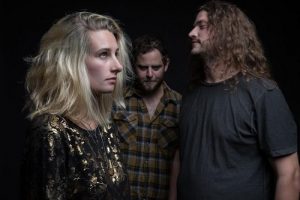 What common musical interests and influences did the three of you share? And what are some of the things that you did not share and maybe turned each other on to?
What common musical interests and influences did the three of you share? And what are some of the things that you did not share and maybe turned each other on to?
For us, the sound of the late-nineties early-two-thousands is the sound of our youth. Definitely something we all share is a love for the best of whatever was on the radio when we were kids. We all share a genuine love of playing our instruments and an appreciation for high-level musicianship. We bonded over learning to play jazz together, and late-night free-jam sessions. Will and I both love Rage Against the Machine, enough that we very occasionally do a cover band of them. All that being said, we have pretty disparate tastes when it comes to what we would put on to listen to for pure enjoyment. That is actually pretty cool though, because for me at least, it leads to getting turned onto new stuff I wouldn’t have otherwise heard. Leah puts Lana Del Rey on in the van a lot, which is what got me into her. It was also Leah who turned me on to Ovens, who have since become one of my favorite bands. Will turned me onto Red Fang, who I now listen to constantly. I’m pretty sure I showed them Danny Gatton. One time, I slipped a Metallica song (“The Four Horsemen”) into a playlist in the van and Leah asked who it was…
What did you study in college? What influence did it have on you as a musician?
I mostly studied music while I was there. I studied (we all did really) extensively with this awesome guitarist, Glenn Alexander, who is currently the lead guitarist in Southside Johnny and the Asbury Jukes, and has played with a million and one awesome people. That guy can be credited with teaching us all how to play. We also all studied with notable jazz drummer, Matt Wilson. It was incredible for us to learn from and play with people on that high a level of musicianship. After jamming with Matt Wilson one day, I remember thinking that it was like jamming with Spider-Man, because it was like he could see a few seconds into the future and react to what you’re doing before you do it. That depth of listening is something that really influenced me, and I think, all of us. We definitely use many of things we picked up studying jazz, and a traditional approach to playing, in Slothrust. For instance, we spend most of “Like a Child” in a medium-swing groove with a walking bass line, it doesn’t get much more traditional than that.
What type of music did you listen to growing up?
I was really into metal and classic rock growing up. Metallica, Pantera and Guns N’ Roses CDs all lived in the Discman I carried everywhere for like a year each. I remember waiting in line to buy “Californication” on CD when it came out. My older brother got me Rage Against the Machine’s “The Battle of Los Angeles” for Christmas one year, and it totally blew my young mind. Louis Armstrong and Ella Fitzgerald were frequently on around the house when I was a kid. One of the first records I ever bought was a copy of Nirvana’s “In Utero” and I practically wore the groove out. Digging through my dad’s old record collection I discovered the Beatles, Aretha Franklin, Black Sabbath and Jimi Hendrix. I got super into jazz, like Miles Davis’ electric stuff (“Live Evil,” “Bitches Brew”), and all sorts of weird stuff in college, and emerged with an obsession with classic funk and soul, especially P-Funk in all their various forms.
When did you start playing the bass? What inspired you to play that instrument?
I started playing the bass when I was 13. I had been playing trombone in the middle school band. The band teacher was this dude, Vern Miller, who had been in this band, The Remains, who spent three weeks in 1966 opening for The Beatles. Dude was cool, and he played bass. When I finally got a bass, I got it home, plugged into an amp, cranked it up, hit that low E string, and was like “Yaaassssssss!”
Who are some of your musical heroes?
Aretha Franklin, because she is a hero.
Ringo Starr, my favorite Beatle.
John Paul Jones from Led Zeppelin, my favorite bassist.
George Clinton because he’s a truly ridiculous human being.
Who are some of your favorite rhythm sections?
John Paul Jones and Jon Bonham from Led Zeppelin – Always locked, tasteful and musical. Great improvisers who can play crazy stuff when it’s called for, but also hold it down.
James Brown’s backing bands from the late ‘60s and early ‘70s… The former featuring the drummers John “Jabo” Starks and Clyde Stubblefield, and the latter featuring Bootsy Collins on bass and his brother “Catfish,” on guitar, both of whom later went on to be part of P-Funk. Incredibly tight and precise to Brown’s exacting specifications.
The Funk Brothers – The band on most of the great ‘60s Motown hits. James Jamerson on bass, Benny Benjamin or “Pistol” Allen on drums. Jamerson’s bass lines are incredibly melodic, and to this day those grooves can still blow up a dance floor.
Tim Cummerford and Brad Wilk from Rage Against the Machine – Possibly one of the most sonically powerful rhythm sections, they are a huge influence on me.
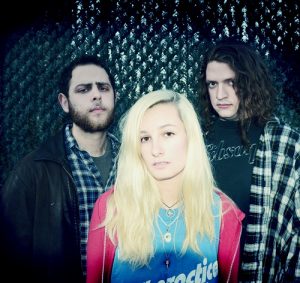 Who are some artists that you consider kindred artists or peers, maybe groups you have toured with?
Who are some artists that you consider kindred artists or peers, maybe groups you have toured with?
Mal Blum and the Blums – We’ve been playing shows together for years now and it’s been awesome to watch them evolve as a band. Their latest record kicks all types of ass.
Big Ups – Also played shows with them for years. Watched them go from being the best punk band in Brooklyn to really finding and defining a truly unique and awesome sound.
Are you all living in L.A. now?
Yes! But we’re new in town. Will and Leah have been there since late last year, and I’ve been a couple weeks!
How do you compare the pace of living in New York with LA? Can you pinpoint your locale as having any impact on the music you create?
LA seems like it operates at a slightly slower pace, but for me it really remains to be seen. New York makes you impatient. I find myself standing behind someone in a coffee shop who is having a conversation with the barista and I’m internally saying, “Can you finish this up already?” regardless of whether or not I’m actually in a rush. New York does that too you. We all lived and “became a band” in New York, and I loved those years and will always remember them fondly. I think the hyper-exposure to the huge amount of incredibly varied influences we all experienced there influenced the band in a big way. There are a lot of bands there. But, generally speaking, it’s a pretty inclusive and creatively nurturing environment for a young band. There’s a great scene in Brooklyn with a ton of cool music coming out of it. There’s a selection of shows one could go see on any given night. There’s so many venues, that even a relatively unknown band can play pretty much all the time, which we did, for years. As for how living on the west coast will impact our new music, we’ll just have to see!
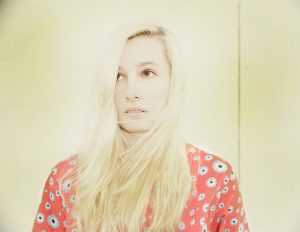 How would you describe your live show? How has it changed from the early days?
How would you describe your live show? How has it changed from the early days?
Our live show has definitely changed a lot since the “early days.” I feel like our live show has the intimacy of a solo-singer-songwriter-performance, but the energy of punk rock. It’s a display of Leah’s immense talent and ability as a guitarist, singer and songwriter. It’s a good band playing good songs. These days, we’ve got much more material, and can pull out a ton of different stuff depending on how we’re feeling. Touring has made us much tighter and better able to craft a set. There’s also a lot of ways that things haven’t changed. We started out playing basement shows with one microphone plugged into two guitar amps, and house parties where you were hoping the cops didn’t come before you finished your set. Since the idea of a soundcheck was laughable, we started every set with an instrumental to get the levels right. We got used to starting our sets that way, it’s something we still do!
In addition to the upcoming shows, do you have any other plans for promoting “Everyone Else”? Videos, remixes, etc.?
We’ve got some live performances, acoustic sessions and other assorted mystery video treats that will be out soon!
What’s next for Slothrust?
We’ll be on the road a bunch this year!
We’re always working on new stuff!
Lastly, how is the band’s name pronounced?
Sloth like the animal, rust like rust.

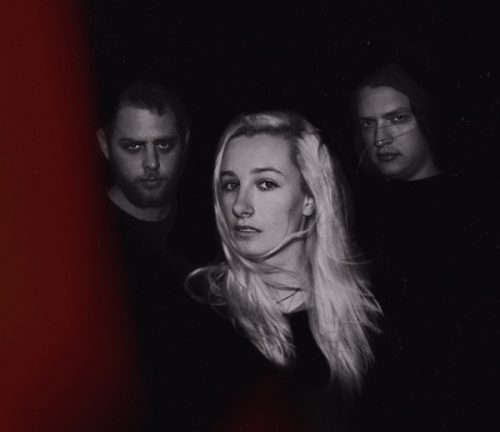
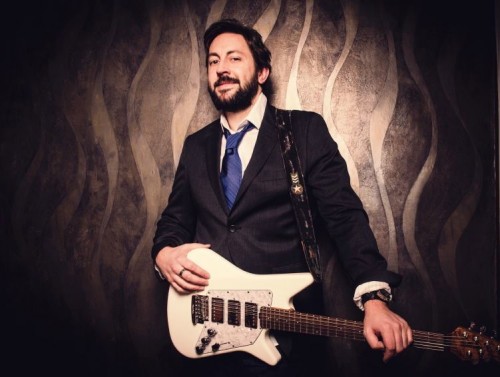

Leave a Reply